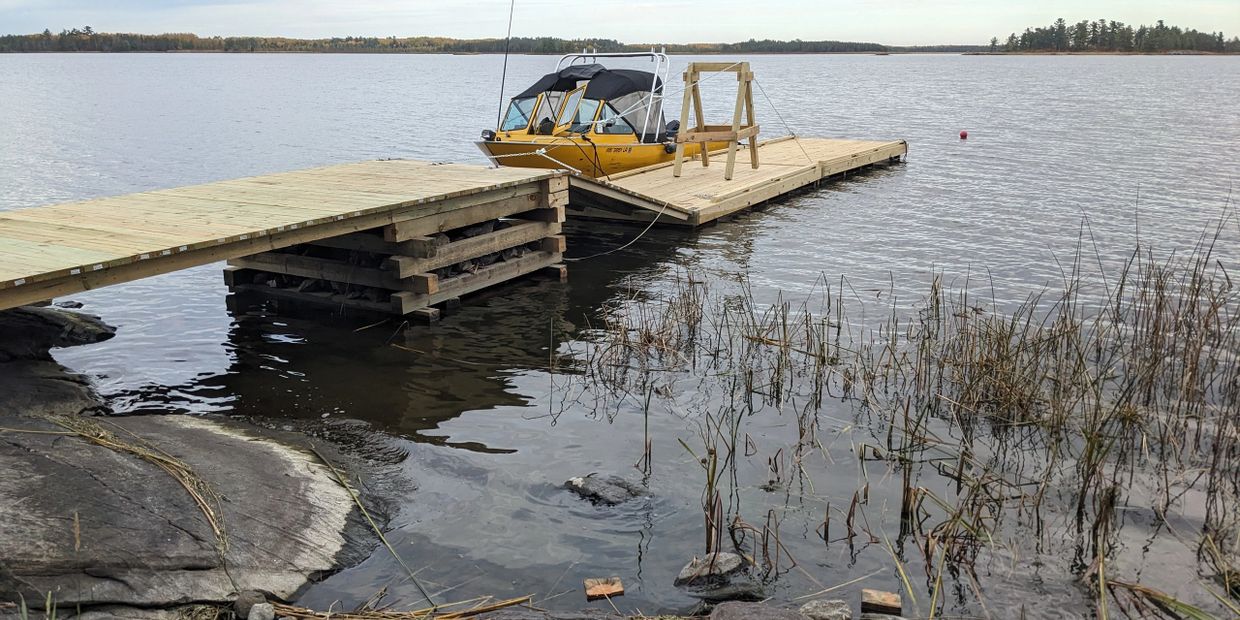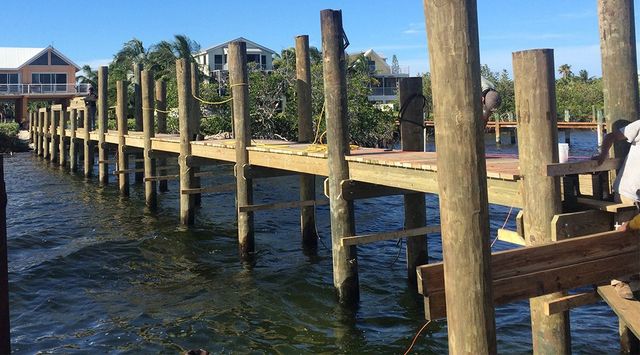Seasonal Preparations: When to Arrange Your Dock Repairs
Seasonal Preparations: When to Arrange Your Dock Repairs
Blog Article
Reliable Dock Fixing Techniques: Ensuring Architectural Stability
Making sure the structural stability of anchors via reliable repair service techniques is critical for the long life and safety and security of aquatic facilities. Subsequently, choosing the best fixing products, such as composite materials and corrosion-resistant alloys, is essential for durability.
Analyzing Dock Damages
Assessing dock damage is a critical very first step in making certain the structural honesty and safety of any docking facility. This initial evaluation includes a comprehensive examination to identify both concealed and noticeable damages. Secret elements to take a look at consist of the dock's structure, pilings, outdoor decking, and equipment. Each part must be inspected for indicators of wear, rot, corrosion, or various other types of deterioration that can endanger the structural honesty.
Structural designers or qualified inspectors normally do these evaluations using specialized techniques and devices. Underwater assessments might employ sonar equipment or remotely ran automobiles (ROVs) to find immersed damage. Over water, aesthetic evaluations are matched by utilizing moisture meters and various other diagnostic tools to reveal underlying problems not quickly noticeable to the naked eye.

Deciding On Fixing Materials
Picking the ideal repair service materials is a critical action in the dock remediation process, one that directly influences the durability and efficiency of the fixed framework. Material option must be driven by aspects such as environmental conditions, load-bearing requirements, and compatibility with existing dock elements. For circumstances, wood is a typical selection for anchors because of its all-natural resilience and aesthetic allure. Nonetheless, choosing the appropriate type of wood, such as pressure-treated lumber or normally rot-resistant varieties like cedar or teak, is vital to stand up to water atmospheres.
In addition to wood, composite materials are increasingly preferred due to their sturdiness and low upkeep requirements. Compounds, generally made from a mix of plastic and wood fibers, offer superb resistance to rot, bugs, and UV damage. For metal anchors, selecting corrosion-resistant alloys such as galvanized steel or marine-grade light weight aluminum is vital to prevent rust and make certain architectural integrity in saline water problems.
Epoxy materials and marine-grade sealants are important for fixing splits and securing joints, giving a water resistant obstacle and enhancing the dock's total strength. By diligently selecting premium products, dock fixings can accomplish resilient outcomes, thus protecting against future deterioration and making sure secure, trustworthy use.
Architectural Support Methods
Effective structural support methods are essential in ensuring the stability and longevity of dock fixings. One basic method includes using steel or composite reinforcement bars (rebar) within concrete frameworks. Rebar offers added tensile toughness, preventing fractures and dispersing lots a lot more evenly. This approach is particularly efficient for docks exposed to hefty lots or harsh environmental conditions.
One more necessary strategy is the application of fiber-reinforced polymers (FRP) These products supply high strength-to-weight ratios and outstanding resistance to deterioration, making them suitable for enhancing wood or concrete docks. FRP can be applied in strips or sheets and bonded with epoxy resins to boost structural integrity.
Supporting and anchoring systems additionally play a vital duty in architectural support. Cross-bracing, making use of steel or wood beam of lights, can counteract side pressures, decreasing persuading and motion. Anchoring systems, such as helical piers or driven piles, supply a secure foundation by moving loads to deeper, a lot more secure dirt layers.
Finally, the combination of load-distribution plates can aid disperse weight a lot more equally throughout the dock's surface, alleviating local anxiety points. These strategies collectively ensure that docks continue to be safe and robust, with the ability of withstanding the roughness of their functional environment.
Advanced Repair Work Methods

Another advanced method entails underwater welding, which permits for repairs to be carried out without the requirement to dewater the location. This approach is especially helpful for attending to architectural issues in submerged dock parts, guaranteeing very little disturbance to procedures. Enhanced welding methods, paired with robot systems, provide precision and dependability, consequently extending the life-span of the dock.
Additionally, cathodic security systems are applied to stop corrosion in metallic dock structures. By utilizing sacrificial anodes or amazed current systems, these methods effectively alleviate the electrochemical procedures that lead to material damage.
Last but not least, progressed surveillance technologies, such as structural health monitoring (SHM) systems, offer real-time data on the problem of dock structures. These systems allow proactive maintenance and timely interventions, inevitably making sure the long-lasting structural integrity of the dock.
Upkeep and Prevention
Upkeep and prevention are essential concepts that underpin the longevity and safety of dock structures. Normal assessments are extremely important, allowing for very early detection of deterioration, prospective weak points, and environmental influences. A positive approach, involving routine look for rust, rot, and structural shifts, reduces expensive repairs and extends the dock's operational life.
Safety nets need to consist of using safety finishes to metal components to defend against corrosion and utilizing cured timber to stand up to decay. In addition, making sure proper water useful reference drainage and air flow can prevent water buildup, which is an usual cause of architectural degradation. Incorporating top quality products and adhering to supplier guidelines during building and construction and repair service stages also play important functions in boosting sturdiness.

Training personnel in dock maintenance finest methods guarantees consistent application of preventive actions. Leveraging technological breakthroughs, such as drones for assessments and sensors for real-time monitoring, can further improve maintenance initiatives. By prioritizing upkeep and avoidance, dock owners can make certain structural stability, functional safety, and cost-efficient management over the dock's life-span.
Verdict
In conclusion, maintaining the architectural honesty of aquatic centers demands thorough dock fixing techniques. Advanced fixing methods, paired with routine upkeep methods, ensure the dock stays functional and safe under varied ecological problems.
Making sure the architectural honesty of anchors through efficient repair service strategies is critical for the durability and safety of aquatic facilities.Picking the ideal repair work products is a crucial action in the dock restoration procedure, one that straight affects the long life and performance of the fixed framework.Efficient structural reinforcement methods are important in guaranteeing the stability and longevity of dock fixings. By focusing on maintenance and avoidance, dock owners this link can make sure structural stability, functional safety and security, and affordable administration over the dock's lifespan.
In conclusion, maintaining the structural integrity of aquatic centers requires view it now detailed dock fixing strategies.
Report this page